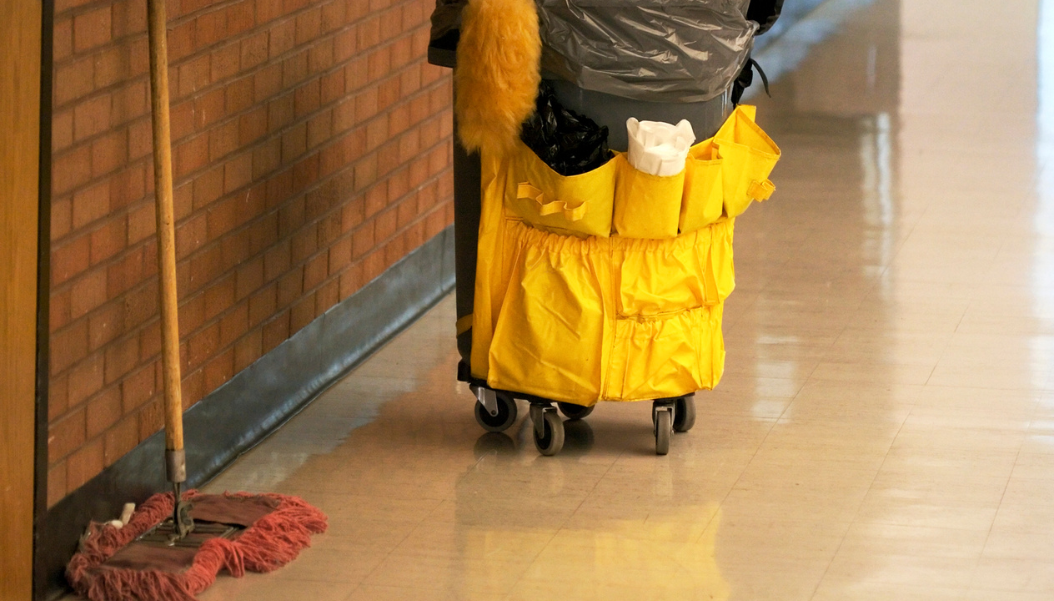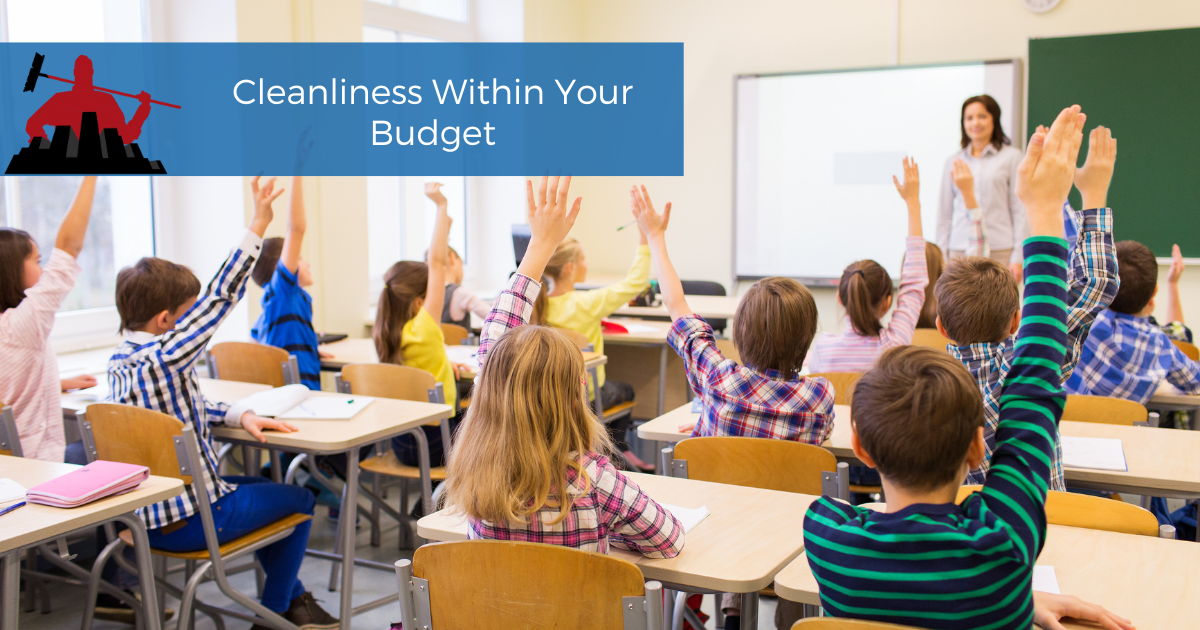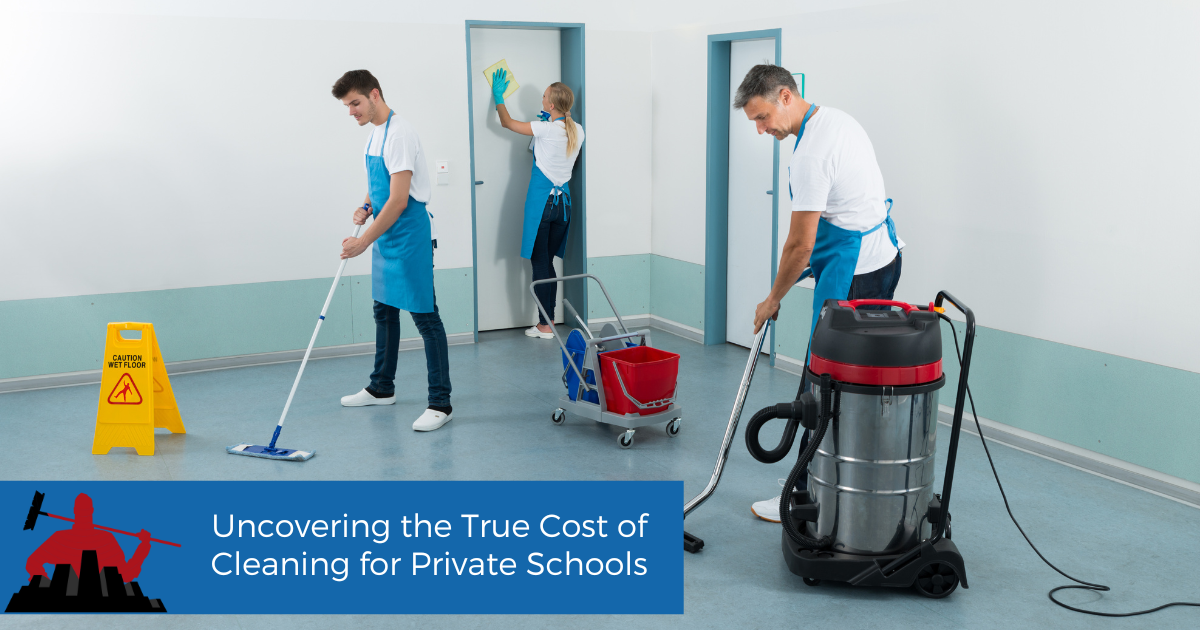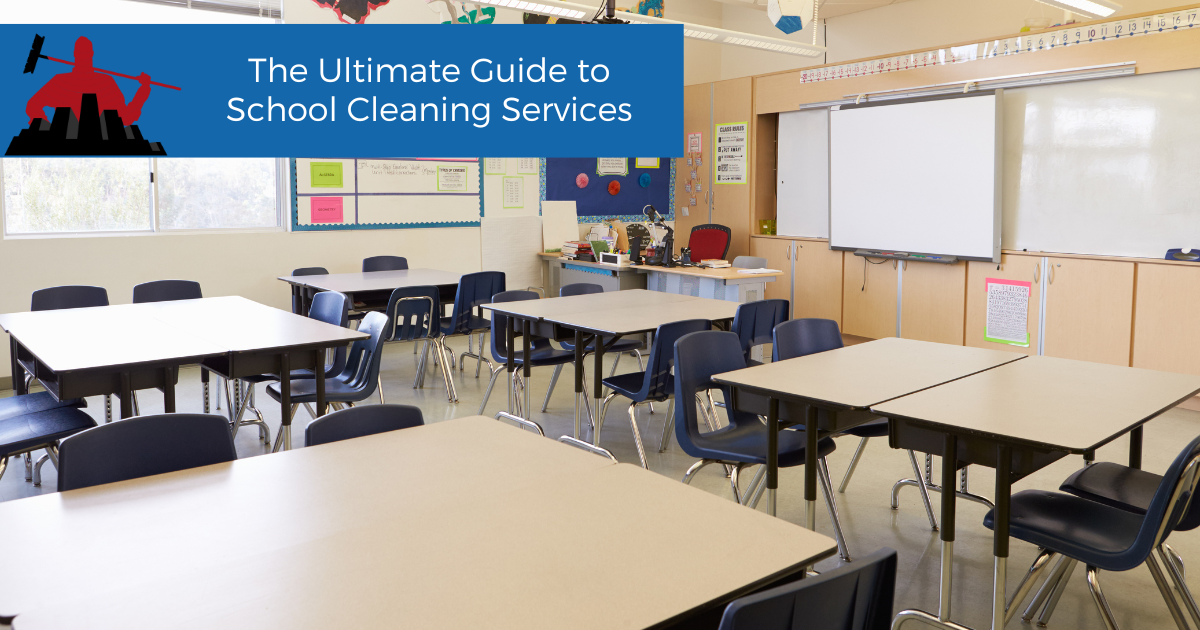School Cleaning Best Practices for a Safe Environment
As a school facilities manager, you are responsible for maintaining a safe,
conducive learning environment. As a valuable school management team member, following school cleaning best practices ensures you meet the expectations of parents, students, and staff. This guide covers essential school cleaning best practices to improve facility cleaning protocols and maintain the highest cleaning standards.
Share this page:
Importance of Routine Cleaning

Routine cleaning minimizes the effort required to maintain the highest level of cleanliness for your school. It addresses common culprits that contribute to undesirable conditions, such as:
- Sanitizing high-touch surfaces to reduce the spread of illness
- Keeping high-traffic areas free of debris
- Removing trash from classrooms and faculty offices, and lounges
- Removing germs from washrooms, and
- Reducing the risk of foodborne illnesses in the cafeteria
As the foundation for your school cleaning best practices, routine cleaning offers many benefits, including:
- A safer school environment
- Reduced risk for insects and vermin
- Reduced allergens to decrease respiratory symptoms related to allergies and asthma
- Reduced staff sick days
- Improved student attendance
- A more appealing school that increases school pride
- Happier staff to reduce employee turnover
- Operational system efficiency
Regular and thorough cleaning ensures you comply with the
EPA's model school environmental health program to maintain the highest educational standards.
Proper Use of Cleaning Supplies and Equipment
Using proper cleaning products and tools protects school equipment and surfaces from damage. However, the supplies and equipment must be properly used to be effective and safe. Proper use of cleaning supplies and equipment ensures your facility is:
- Safety: Cleaning products can expose students to dangerous chemicals if not stored and applied using the manufacturer’s instructions. Proper use ensures staff and students reap the benefits of cleaning chemicals that remove germs without risking exposure to toxins that can lead to issues.
- Improved Cleanliness: The proper equipment and cleaning supplies ensure each cleaning task is performed correctly. By using products for their intended purpose, you see better results, improving your school’s cleanliness.
- Cost Effectiveness: Proper use of cleaning supplies saves money. You a) only have to perform cleaning duties once and b) reduce wasting cleaning supplies used too frequently, incorrectly, or on the wrong surfaces. Using the right equipment also speeds up the cleaning process, improving efficiency.
- Leveraging technology: Advancements in cleaning technology also improve efficiency. Using the best products and tools available, from microfiber clothes to battery-powered cleaning tools and from green products to robotics, keeps cleaners working smarter, not harder.
Prioritizing High-Touch Surfaces
School cleaning best practices separate high-touch and low-touch surfaces based on the frequency of use and traffic. Prioritizing high-touch surfaces kills germs and bacteria, reducing the spread of illness to students and staff. High-touch surfaces must first be cleaned to remove visible soiling and then disinfected as part of your daily cleaning schedule.
Implementing a Cleaning Schedule
Cleaning schedules ensure that recommended cleaning frequency is followed and that all school equipment, surfaces, and areas are cleaned consistently and thoroughly. As a result, managers simplify the cleaning and maintenance process by following a standard daily, weekly, monthly, and annual schedule.
Structured school cleaning best practices helps schools:
- Improve productivity
- Ensure nothing is missed
- Avoid unnecessary exposure to harsher cleaning products and equipment
- Increase the life expectancy of cleaning equipment, school systems, and materials with less frequent use
A cleaning schedule includes:
- A comprehensive list of all cleaning tasks by room/area
- Cleaning frequency for each area based on traffic and recommended cleaning best practices
- Cleaning practices for areas that require sanitization/disinfecting
- Daily, weekly, monthly, and annual cleaning duties by room/area
- List of cleaning products and equipment to use for each cleaning task
- Task assignments to determine if it is an in-house task, employee task, student task, or outsourced cleaning task.
- Identifying specialty cleaning requirements such as duct cleaning, floor polishing, window treatment cleaning, floor mat cleaning, etc.
For your cleaning schedule to be effective, accountability is critical. Clear assignment and explanation of duties ensure everyone understands what they are expected to carry out, when to do it, and how.
Training Staff and Promoting Hygiene
Adapting an intense training program on school cleaning best practices ensures students have a conducive environment. Training should follow proper cleaning protocols and techniques to maximize cleaning efficiencies and help cleaners understand the appropriate use of cleaning equipment and supplies, including:
- Addressing cleaning duties for each area of the facility
- Proper cleaning methods to set a high standard of cleaning levels to keep cleanliness consistent throughout the facility
- Understanding of federal and state regulations using industry-related cleaning protocols
- Safe handling for storing and using cleaning products
- Cross-contamination prevention
However, schools also have to model good hygiene to help reduce the spread of germs. Therefore, teaching students hand-washing protocols from an early age is essential. Teachers help set a good example and maintain standards for proper classroom “germ etiquette.” Praising children for proper hygiene helps provide positive reinforcement to encourage clean habits, contributing to the well-being of everyone..
Recommended germ etiquette best practices include:
- Coughing and sneezing into the elbow
- Avoiding touching the face, especially the nose and mouth
- Handwashing before eating or using school equipment and after using the bathroom
- Focusing on proper handwashing instead of encouraging the use of hand sanitizers
- Sharing cleaning responsibilities after using the gym, library, cafeteria, etc., such as helping to put books and equipment away after use
- Teaching students to share cleaning responsibilities when using common classroom areas, especially after special activities such as:
- Classroom parties
- Art projects
- Science experiments
- Playtime in junior classes
- Snack time
- Using shared class equipment, toys, books, etc.
Training everyone in the school community contributes to a more conducive environment.. It develops a shared sense of responsibility to maintain a higher level of cleanliness. Students look to their teachers to set good examples and to learn the importance of “pitching in” to create a more pleasant learning environment.
Enlist the Experts
Adhering to school cleaning best practices is challenging without the right resources. Hiring a school cleaning service ensures best practices are followed based on your daily, weekly, monthly, and annual schedule. Professional cleaners also:
- Use the right tools and equipment
- Keep up with changing government standards
- Follow cleaning trends and innovations to remain efficient
- Maintain ongoing education and training
- Contribute to creating a clean school culture
Serving Schools Throughout Our Local Communities
At Terran's Spic & Span Cleaning Services, we’re committed to helping schools in Norristown and the surrounding areas maintain a clean, safe, and healthy environment. We proudly serve schools and educational institutions in:
Reading
Souderton
Upper Darby
West Chester
Learn More with Our Ultimate School Cleaning Guide
By following these school cleaning best practices, you can maintain a clean and safe learning environment for students and staff. For more information and valuable insights, check out the rest of our
Ultimate School Cleaning Guide, which includes tips on industry trends,
choosing the right vendor, and expert advice on cleanliness maintenance.
Share this page:






